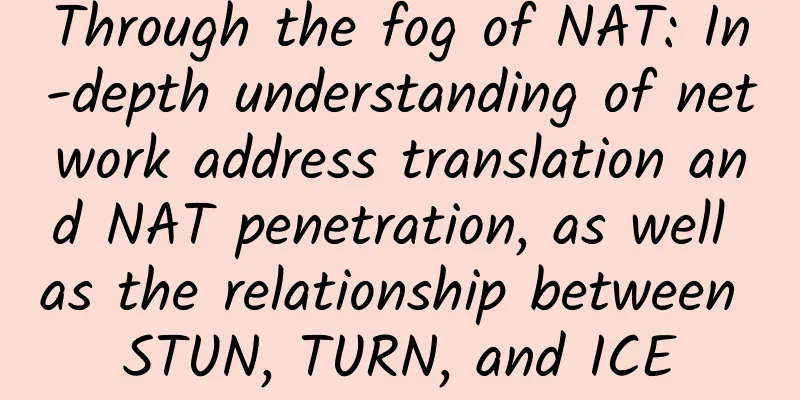Let’s talk about gRPC that you don’t know today

|
Hello everyone, I am Zhibeijun. It is the last day of another work week, but don’t forget to work hard. If you endure hardship when you grow up, you will drive a Land Rover. If you don't work hard when you are young, you will drive a Xiali when you grow up. Next, let's get to the point~ IntroductionI believe that everyone has a certain understanding of the RPC protocol, and it will be involved in the project to a certain extent, but you may be similar to me, who directly uses the plug-ins encapsulated by the platform, and you don’t know much about the principles. Today, I would like to take this opportunity to share with you the RPC framework I have recently come into contact with - grpc, and talk about those things that you know but don’t know why. OverviewRPC (Remote Procedure Call) is a protocol that allows a local computer to request a remote computer through the network to complete the interaction of data content between computers. It can be quickly used without understanding the underlying network technology, making development easier and improving the efficiency of the interactive experience. To facilitate development, there are many RPC frameworks implemented based on the RPC protocol, such as Thrift, Dubbo, and gRPC, which will be introduced in this article. What is gRPC
The client (gRPC Sub) calls method A to initiate an RPC request The request content uses Protobf for object serialization and compression The server (gRPC Server) receives the request, parses the request content, and returns after business processing The response result is compressed by object serialization through Protobuf The client receives the response, parses the response content, and finally completes the interaction Practical CasesThe editor uses the Java version for case demonstration. Other languages are similar and can be tested by yourself. POM Dependencies
<!-- gRPC configuration --> Writing protobuf files
syntax = "proto3" ;
Writing interface implementation classes
// Inherited from RuleServiceGrpc.RuleServiceImplBase Server and Client
public static void main ( String [ ] args ) throws Exception {
public static void main ( String [ ] args ) throws Exception { The client log output result means that the client successfully calls the server through gRPC and returns the result. ConclusiongRPC is essentially the traditional C|S model, which makes the roles clear and easy to understand. Another smart thing is that it is based on the HTTP2.0 protocol instead of being self-developed, which is very friendly to future network development and lowers the threshold. The most difficult part is the writing and use of proto files, which requires plugins and other dependencies, and the process is relatively complicated, but there may also be tools or scripts that can simplify this part. But the generated code is really good~ It reduces some of the workload. |
>>: How to ensure the security of 5G wireless networks
Recommend
LisaHost: Singapore/Taiwan/US ISP residential IP hosting starting from 68/month, AS4837/9929/CN2 GIA lines available
Lisahost was registered in Hong Kong in 2017. It ...
Focusing on intelligent network connectivity and IoT innovation, H3C made a stunning appearance at the 2019 World Internet of Things Expo
[51CTO.com original article] On September 7, the ...
From 1G to 5G, the evolution of the era of 5 communication revolutions
2019 is seen as the beginning of 5G, and many ope...
[Black Friday] RAKsmart: San Jose servers start at $30/month, Los Angeles servers start at $60/month, Japan servers start at $99/month
November is a busy month. The Double 11 promotion...
Three-minute review! A quick overview of 5G industry development trends in April 2021
Since April 2021, my country's 5G development...
[6.18]DogYun: Top up 100 yuan and get 10 yuan, 30% off for Dynamic Cloud, 20% off for Classic Cloud, 100 yuan off for Dedicated Server per month, up to 50% off for Lucky Wheel
DogYun is a Chinese hosting company established i...
[11.11] ZJI: Hong Kong special server 30% off, 999 get 1100 yuan voucher
ZJI has released a promotional plan from now unti...
Summary of the State Council Information Office press conference, involving 5G, chips, etc.
[[423758]] On the morning of September 13, the St...
We cannot allow "free-network tools" to threaten network information security
Recently, the official website of the Ministry of...
Which 5G operator has the fastest internet speed in Hong Kong? Speedtest announces the results
Last year, Hong Kong officially launched 5G netwo...
HostingViet: 35% off for annual VPS/virtual hosting in Vietnam, 35% off for new purchases of Email Server
HostingViet's April promotion will end in two...
Wi-Fi 7: What is it and when can you expect it to arrive?
[[380191]] Wi-Fi 7 is expected to have higher dat...
HostYun Japan Osaka AMD series VPS simple test
In March this year, we shared information about H...
Xuzhou Tongshan District: Millions of people fall in love with "Government Cloud"
[[188582]] In an environment where everyone is &q...
Is the expansion speed of WiFi 6 really much faster than 5G?
In daily life, we may encounter the following sit...









